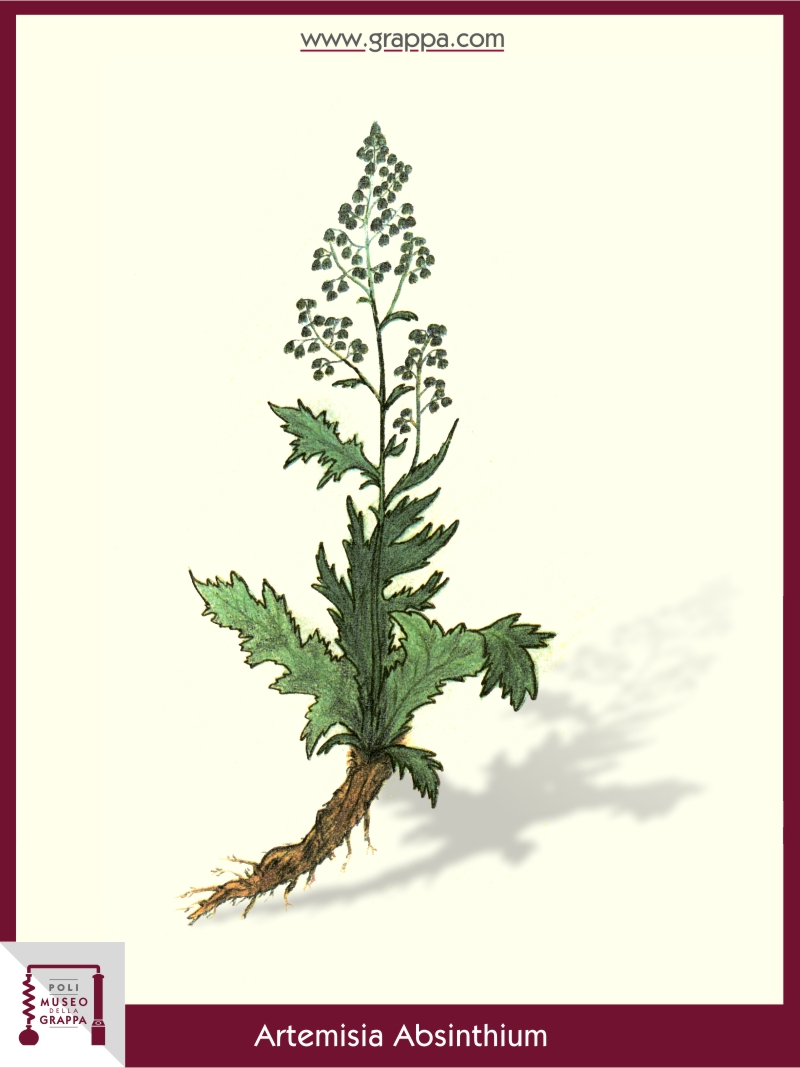An "ordinary" aperitif
- Plant: Absinthe (Artemisia Absinthium)
- Plant part: flower
- Plant feauters: vermifuge, tonic, stomachic expectorant, stimulating, stimulates blood flow, febrifugal

-
Description:
Phoebe, the Greek goddess of hunt and herd, was always associated with the name of a medicinal plant known as Artemisia, perhaps in reference to the fame that this plant had as a medicine useful for women diseases.
On the other side Artemisia it is also synonymous of safe and sound, and this for a good reason, because the Artemisia was always appreciated as a "panacea" for all types of disease. In fact, Plinio was used to give big consideration to the plant and suggested it for countless pathologies: from stomach to liver ache, to kidney diseases and even as anti-nausea for sailors.
But the use of the plant is especially connected to its reputation as "stomach’s friend", as indeed the Arabian doctors such as Avicenna and Avenzoar had already define it, who prescribed it as a strong appetite stimulant.
Aperitifs are effectively all liqueurs that somehow make use of Artemisia. Just think to the famous Absinthe which is basically Artemisia (Artemisia Absinthium L.) which is now part as the main component of vermouth, aperitifs, bitter and flavoured wines.
-
Note:
The absinthe-based spirits are contraindicated in all gastrointestinal diseases, by excess of blood and during pregnancy. It is advisable not to exceed the recommended doses because it may cause poisoning with vomit, convulsion and diarrhea.
The recipe
-
Ingredients:
- 3 fresh flowering tops of Artemisia
- 1 liter Grappa -
Preparation:
Let macerate three fresh flowering tops of Artemisia for 15 days in a litre of Grappa, leave them macerate in a sunny location and shake it occasionally. We will get a dark green coloured liqueur and strongly bitter taste; colour and flavour can be easily mitigated by a 6 month aging. This Grappa is definitely an effective digestive but, considered its "strong" flavour, it is recommended to dilute it with hot water sweetened with honey.
But if we want to get from Artemisia an aperitif, we have just to add during maceration of our grappa 4 cloves, a little bit of nutmeg, a pinch of cinnamon, some seeds of coriander and one lemon peel. To this prepared infusion we will add half a litre of red vermouth and 250 grams of brown sugar; after a maturation of 6 months you will get a unique aperitif with a sweet-bitter taste.
Poli Distillerie and
Poli Grappa Museum
Newsletter
Subscribe our newsletter to keep up to date with our latest news.